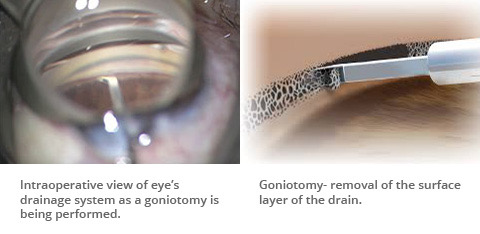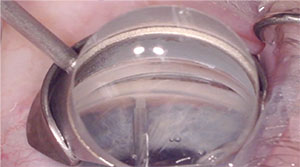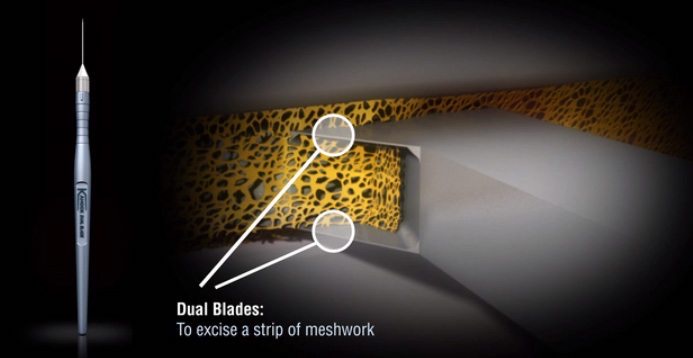Goniotomy is performed to lower intraocular pressure (IOP) in patients with primary and secondary open angle glaucoma. It can be performed in addition to cataract surgery at the end of the cataract case. This adds a few minutes to the end of a typical cataract case. The procedure can also be performed as a stand alone glaucoma surgery without cataract surgery in patients that have had cataract surgery. This surgery is FDA approved for the treatment of mild, moderate and severe open angle glaucoma as well as patient’s with ocular hypertension.
The procedure works by removing the tissue called the trabecular meshwork between the anterior chamber and Schlemm’s drainage canal in the eye. Although the surgery has been performed for several years, the Kahook Dual Blade has made for a safe, precise, efficient surgery.
After the surgery, the eye will drain fluid easier because 25-50 or even 75% of the drainage duct mesh-work have been removed.

 The Kahook Dual Blade (KDB) is different than the OMNI procedure which combines Goniotomy with visculocanulodilation. In that procedure, viscoelastic jelly is injected into Schlemm’s canal to dilate these drainage ducts prior to goniotomy.
The Kahook Dual Blade (KDB) is different than the OMNI procedure which combines Goniotomy with visculocanulodilation. In that procedure, viscoelastic jelly is injected into Schlemm’s canal to dilate these drainage ducts prior to goniotomy.
This procedure has been shown to be effective at lowering the pressure at the time of cataract surgery better than cataract surgery alone. Data shown below are outcomes from the Kahook Dual Blade Study

STUDY:
Outcomes of Kahook Dual Blade Goniotomy with and without Phacoemulsification Cataract Extraction. Ophthalmology. Seick, EG, Epstein RS, et al.
- Measured surgical success with KDB alone and KDB with phaco as > 20% reduction of IOP at 12 months
- 8% in the phaco/KDB group
- 8% in the KDB alone
- Most common complications:
- Transient hyphema D#1 (17.3%)
- IOP spike at 1 wk >10mmHg from baseline (10.2%)






